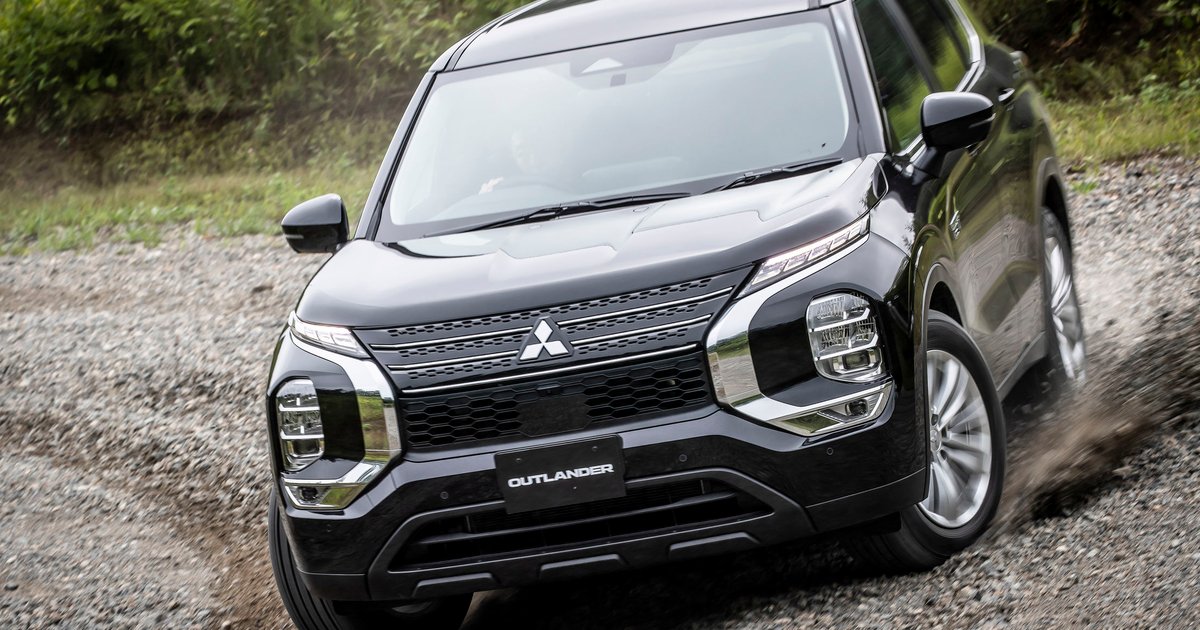
ANN ARBOR, Mich. — The second-generation Mitsubishi Outlander plug-in hybrid dials up its EV-ness, signaling the brand’s push toward electrification.
The midsize crossover evolves — inside and out — in its first redesign since it arrived on U.S. shores five years ago.
The 2023 Outlander PHEV is bigger, bolder and packs more punch than the outgoing model, which was the first non-premium plug-in hybrid crossover.
The latest model starts at $41,190, including shipping, and arrives in late November. That’s a $2,850 premium over the outgoing Outlander PHEV.
“Outlander’s our flagship, and this is the flagship of the flagship,” Cason Grover, Mitsubishi Motors North America’s product planning chief, said at a media briefing in Ann Arbor this month.
Much is riding on the three-row crossover as the small Japanese automaker jostles for relevancy in the world’s second-largest auto market. Mitsubishi’s U.S. sales, which peaked at 345,915 two decades ago, hovered at 100,000 last year.
While the auto industry goes all-in on battery-only vehicles, Mitsubishi is doubling down on its plug-in hybrid technology bet.
“We feel PHEV is the right solution for the market today,” Mitsubishi Motors North America CEO Mark Chaffin told Automotive News. “We start with PHEV, then lean into our EV heritage to continue on the path.”
The new Outlander PHEV, which shares a platform with alliance partner Nissan’s Rogue crossover, features a beefy battery, powerful electric motors and third-row seating.
It also offers quick charging and one-pedal-style driving, technologies typically reserved for fully electric vehicles.
The PHEV system received significant upgrades, including a 20-kilowatt-hour battery, which Grover said is the “biggest in the segment.”
The battery delivers up to 38 miles of zero-emissions driving — a nearly 60 percent range increase from the previous generation.
The average customer commutes 32 miles a day, Chaffin said.
“You can be on [battery power] Monday through Friday,” he said. “Then, when you take off on the weekend adventure with your family, you’ve got the ICE engine to extend your capability and the freedom to go where you want.”
The 2.4-liter four-cylinder engine paired with dual motors delivers a combined 248 hp — a 43 percent boost from the outgoing generation.
The new powertrain provided sufficient pep to merge onto a busy highway. A drive around the University of Michigan campus here in EV-only mode was mostly whisper-quiet, thanks to the double-paned front windows and the rear motor positioned outside the passenger compartment.
The updated all-wheel-drive technology in the new PHEV, Mitsubishi said, also improves handling and stability by continuously controlling vehicle movements during accelerating, cornering and braking.
The Outlander PHEV carries over the off-road styling of its redesigned nonhybrid sibling.
The front receives a muscular makeover with a high hood and an updated grill flanked by daytime running lights and turn signals.
Vertically arranged headlights sit on the outer reaches to emphasize the vehicle’s width. Horizontally themed taillights accentuate the vehicle’s planted stance.
The rear spoiler and smoothly rounded back corners enhance aerodynamics, while the bottom cover shielding the underside of the body improves airflow to reduce wind resistance.
Creative packaging of the new platform allows for third-row seating. The rear motor is integrated with its control unit, while the 14.8-gallon gas tank is plastic-sealed for a compact and lightweight footprint.